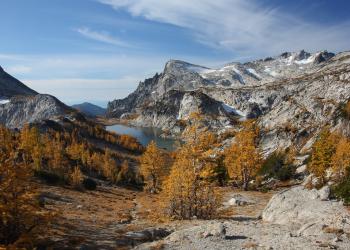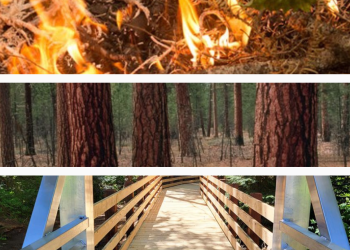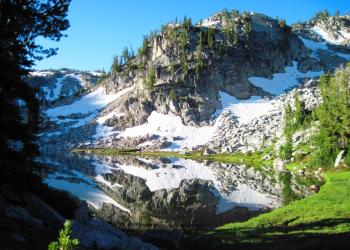Planning
Forest planning helps us chart a long-term path for healthy, resilient landscapes—and shapes the on-the-ground projects that bring these plans to life. Whether we're restoring wildlife habitat or reducing wildfire risk through a local project, or updating a forest plan to reflect today's conditions, planning and using the National Environmental Policy Act, or NEPA, as our framework, is how we make thoughtful, informed decisions for the future of our National Forests.
What Are Projects?
Projects are the local, actionable efforts that help us implement our forest management goals. These activities—like trail improvements, fuels reduction, aquatic restoration, or road repairs—are designed to make public lands safer, more accessible, and more sustainable.
We work closely with local communities, governments, Tribes, and partners to develop projects that meet public needs and reflect regional priorities.
Key Benefits of Projects:

✅ Economic Growth – Forest restoration and access projects support jobs and local economies.
✅ Public Safety – Reducing wildfire fuels and repairing infrastructure helps protect people and watersheds.
✅ Access & Recreation – Upgrades to trails, campgrounds, and roads improve the visitor experience.
✅ Partnerships – Cost-sharing, grants, and programs like the Good Neighbor Authority support collaborative land stewardship.
What is a Forest Plan?
A Forest Plan—formally called a Land and Resource Management Plan—sets the strategic direction for how each National Forest is managed. These plans are required by federal law and updated periodically to reflect new science, changing conditions, and evolving public values.
Each forest plan includes:
- Desired Conditions – The long-term outcomes we aim for
- Objectives – Measurable steps toward those conditions
- Standards & Guidelines – Guardrails for activities like recreation, grazing, and logging
- Suitability Determinations – Where and how different uses are allowed
- Management Areas – Places with unique characteristics or priorities
Current Forest Plan Revision Efforts
Northwest Forest Plan

The Northwest Forest Plan (1994) covers 24.5 million acres across Oregon, Washington, and California. A proposed amendment is now underway to update it with modern science and community input.
Learn more about:
- Northwest Forest Plan Amendment
- 1994 Northwest Forest Plan & Background
- 1994 NWFP Survey & Manage Emergency Guidance
Blue Mountains Forest Plan Revision

The Malheur, Umatilla, and Wallowa-Whitman National Forests are revising their forest plans for the first time since 1990. These plans guide management across nearly 5 million acres and are being updated to reflect new information, ecological changes, and community priorities.
Travel Management
Travel Management Planning

Each national forest maintains a road network to provide multiple-use access to public lands. Management of the transportation system aims to balance motorized recreation with natural resource protections and other forest values. The Forest Service manages transportation systems in alignment with law, regulation and policy, including the 2005 Travel Management Rule and each national forest’s land and resource management plan.
Understanding the National Environmental Policy
Whether we're revising a forest plan or launching a trail restoration project, we follow the National Environmental Policy Act (NEPA)—a federal law that ensures environmental impacts are considered before action is taken.
Three main types of NEPA analysis:
- Categorical Exclusion (CE) – For projects with minimal impacts
- Environmental Assessment (EA) – For moderate-impact actions needing deeper analysis
- Environmental Impact Statement (EIS) – Comprehensive review for projects with significant effects
NEPA helps the Forest Service make transparent, science-based decisions. It also ensures that public involvement is built into every step of the process.
Get Involved
We value your voice. Throughout every planning effort—large or small—we offer ways for the public to participate through:
- Public comment periods
- Open houses and webinars
- Email newsletters and updates
- Project-specific outreach on local Forest pages
Sign up for email updates on Forest Service projects and activities.
Find forest-level projects near you
Your feedback helps shape the future of your public lands.



